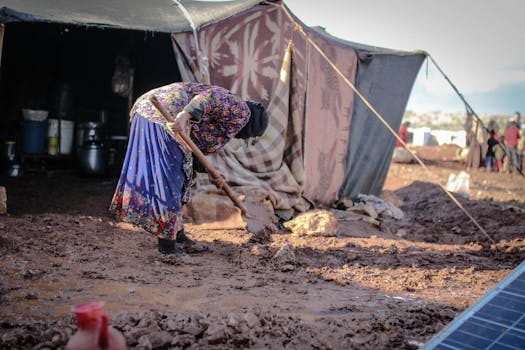
{
“title”: “How Corrupt Hamas Leaders Enriched Themselves at the Expense of Gazans”,
“tags”: [“Hamas”, “Corruption”, “Gaza”, “Israel”],
“slug”: “hamas-corruption-gaza”,
“excerpt”: “An investigation reveals that Hamas leaders have diverted funds meant for impoverished Gazans to fund their own lavish lifestyles, exploiting humanitarian aid and international support.”,
“content”: “
How Corrupt Hamas Leaders Enriched Themselves at the Expense of Gazans
The juxtaposition is striking; amidst the rubble and despair of war in Gaza, the wife of former Hamas leader Yahya Sinwar traverses tunnels beneath the city, clutching a Hermes Birkin bag valued at approximately $26,000. This image encapsulates the corruption pervasive within Hamas leadership, where the elite indulge in luxury while the people of Gaza languish in poverty.
Recent raids by Israeli Defense Forces (IDF) uncovered not only weapons but also millions of shekels in cash—indicative of the systemic corruption within Hamas that is tragically commonplace. In fact, reports suggest that at least $800 million was misappropriated from UN agencies, which were supposed to aid the poor, but instead funneled funds into the personal coffers of Hamas leaders.
In footage captured just prior to the tragic fate of Sinwar—which Hamas refers to as martyrdom—his wife was seen entering the lavishly stocked tunnel with her designer handbag, epitomizing the stark divide between the lives of Hamas leaders and the reality faced by ordinary Gazans. As Sinwar was reportedly eliminated last Wednesday, many other Hamas commanders continue to indulge in luxury living, notably in Qatar, where substantial wealth accumulates among Hamas figures like Ismail Haniyeh and Khaled Meshaal.
These individuals, whose estimated fortunes reach around $8.8 billion collectively, have been residing in opulent accommodations in Doha, benefiting from amenities like private beaches and extravagant suites. In stark contrast, the unemployment rate in Gaza stands at approximately 45%, with the average income a meager $240 per month.
While Meshaal presents himself in a luxurious lifestyle through various media, dining on exquisite meals, ordinary Gazans face starvation. His lifestyle mirrors that of a diplomat rather than a leader of a group purportedly focused on Palestinian welfare.
The tunnels utilized for terror activities provide mere survival resources for their leadership while ordinary citizens suffer from severe deprivation. As these leaders enjoy lavish escapades, the funds meant for humanitarian aid disappear into their networks of corruption. Much of the 36 billion dollars allocated by UN agencies for Gaza reportedly fell into the wrong hands, with allegations of leaders pilfering significant amounts meant for aid.
In addition to international funding challenges, Hamas reportedly raises substantial income through taxation and taxation schemes on goods entering Gaza through cross-border passages, amounting to over $96 million every month—more oppressive burdens on an already impoverished population.
The broad spectrum of corruption manifests across various aspects of Hamas operations. For instance, a notable controversy erupted after Palestinian authorities alleged that prominent figures within the organization had amassed wealth through the smuggling market, turning some 1,700 Hamas officials into millionaires.
When observing the dire circumstances of Gazans, the rampant corruption within Hamas not only provokes anger but reflects the moral bankruptcy of its leadership. Despite opportunities for peace, Hamas squandered countless chances post-Israel’s 2005 withdrawal, opting instead for militant defiance, plundering international relief efforts to fuel violence.
Leaders like Sinwar profit from this chaotic cycle, fattening their coffers through the despair of their people. While they engage in terror and military strategies, the dire humanitarian situation in Gaza deteriorates, leading to widespread suffering.
The entrenchment of this corrupt power dynamic will likely perpetuate cycles of violence and humanitarian crises, requiring continuous scrutiny from the international community to demand accountability and reform from both Hamas and the entities providing financial support.
In conclusion, the plight of ordinary Gazans is starkly contrasted with the excesses of Hamas leadership. While billions pour into the region with the intention of supporting Palestinian welfare, the leaders of Hamas have chosen instead to turn aid into personal gain. Until the corruption at the top is addressed, peace will remain a distant dream for the people of Gaza, and we might unwittingly be complicit in this tragedy through our unyielding patronage.
Source: Daily Mail
“,
“image”: “https://example.com/image-of-hamas-leader.jpg”
}


